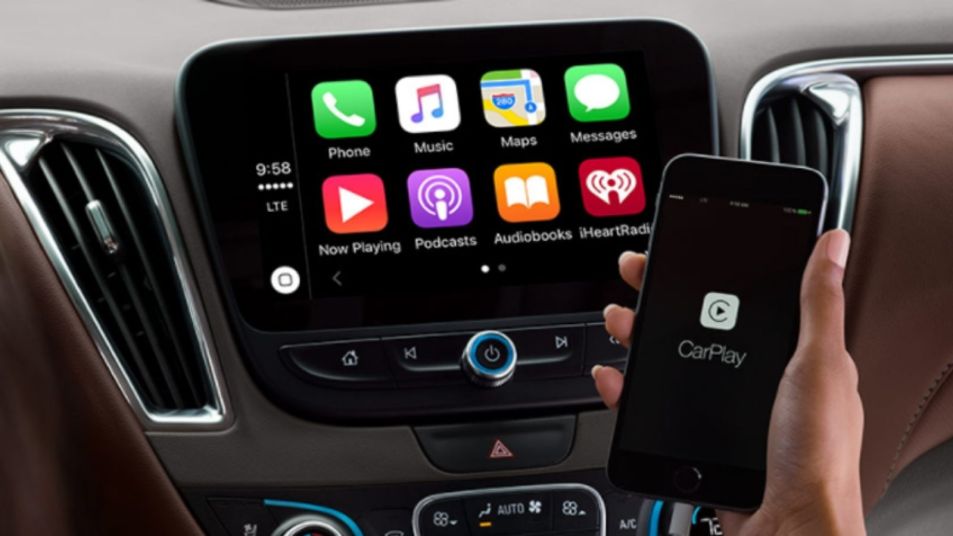Many new and late-model cars include built-in Wi-Fi antennas with the potential to transform them into rolling hotspots with the ability to receive over-the-air (OTA) software updates.
Cars are not turning into rolling mobile phones. But these Wi-Fi antennas can add a connectivity tool to keep passengers entertained and informed. Most urban areas have sufficient bandwidth to stream movies, TV shows, games, and music directly into a Wi-Fi-equipped vehicle.
Wi-Fi hotspots can be a boon, but they can come at a cost that adds up quickly.
So is Wi-Fi in cars really necessary? In this article, we’ll cover:
- Cars With Wi-Fi Capability
- When Would You Want Wi-Fi In Your Car?
- When Is In-Car Wi-Fi Unimportant?
- Over-The-Air Updates (OTA)
- Which Cars Have Wi-Fi Hotspots?
Cars With Wi-Fi Capability
Since the mid-2010s, Wi-Fi antennas have become increasingly common in new cars. Today, a wide range of new 2022 models leave the factory with antennas connecting the vehicle to the Internet and keeping the vehicle’s built-in software up-to-date.
Not Like the Older Car Antennas
These Wi-Fi antennas are not the same as the commonplace cellular antennas. Remember the curly cellular antennas affixed to the windows of high-end cars in the late 1990s? Today, modern cell antennas are hidden inside the dash or under a shark fin enclosure on the roof or headliner. Those antennas connect the car to cellular data networks. Most networks get maintained by providers such as AT&T, Verizon, and T-Mobile.
Even if your car doesn’t use a Wi-Fi antenna, its cellular connection may allow its infotainment system to download periodic updates. It also may be able to connect to a smartphone app to keep tabs on your car’s diagnostics. Plus, it can remotely lock and unlock the vehicle from your phone. Some systems even allow you to find your vehicle geographically. This feature can be helpful for parents with teenage drivers in the house or to help you if the vehicle gets stolen.
Why Do Newer Cars Have Antennas?
Harnessing the cellular data connection brought into the vehicle is the job of the Wi-Fi antenna. This system operates much like the Wi-Fi antenna you may have in your house. It connects your computer and smart devices such as cameras or thermostats to the Internet.
The Wi-Fi antenna in a car works the same way. Users can rename the network and change its password through the infotainment screen. Armed with this information, passengers can connect their phones, laptops, and tablets. They can also access the Internet through the cellular antenna.
In-Car Antenna Benefits
Convenience
The most significant upside to these systems is their convenience. Once you start the vehicle, the Wi-Fi network is active. The car merely needs to be somewhere with an excellent cellular data signal. Thankfully, nearly every major metropolitan area has fast internet coverage. The big providers in these areas typically offer similarly strong connections and fast data speeds along well-traveled highways.
5G Availability
BMW recently announced two electric cars with 5G connectivity. The 2022 iX and i4 models are now available in the U.S., and other automakers will undoubtedly follow.
4G Streaming
Most new cars today have 4G LTE antennas that, ideally, can stream movies and TV shows from services such as Netflix and Hulu. They can easily handle streaming music from Pandora or Spotify, too. Older models are more likely to use slower 4G connections.
If you don’t know what your car offers, the owner’s manual may provide more details. You can also contact the car manufacturer directly.
Generally, in-car Wi-Fi hotspots can connect at least a half dozen devices. On the other hand, if you’re using the Internet on more than six tablets or laptops in your car. It may be time for a screen break!
When Would You Want Wi-Fi In Your Car?
In-car Wi-Fi is convenient for families or drivers who use their vehicles for work.
Movie Streaming
Families can connect a few devices to a vehicle’s Wi-Fi hotspot for easy on-the-go movie streaming, video games, or Internet browsing. A handful of cars offer in-vehicle apps and devices requiring a Wi-Fi connection. One example is Amazon FireTV paired with the rear-seat entertainment system on 2022 Chrysler Pacifica minivans.
Family and Business Needs
Business users may find slightly different benefits. Wi-Fi hotspots typically provide coverage for 50 feet away from the vehicle. This coverage can be helpful on a job site, especially if multiple users need to connect. It’s also beneficial if you live or work in an area affected by a hurricane or thunderstorm that knocks out power to your home. Your car can help you stay connected when the power’s out.
Family and business users can achieve something similar with a significant cellular providers’ portable Wi-Fi hotspot device. Most cell phones can also be used as Wi-Fi hotspots, too.
Stronger Connection
The significant upside to in-car Wi-Fi is convenience. The integrated Wi-Fi antenna and interface should be easy to sort through via the infotainment system. It may allow for a wider Wi-Fi range than a portable hotspot or a phone activated as a hotspot. Additionally, your car’s large antenna will be more powerful, improving coverage in spotty areas.
PRO TIP: Determine which network the automaker uses for your car’s built-in Wi-Fi antenna. If it’s different than your portable device or your cell phone, you will be able to tap into both networks. This discovery may not be as critical for families on the go, but business users should have fewer loss-of-coverage issues.
When is Wi-Fi Unimportant in the Car?
It depends on how you use digital devices in your vehicle. Are you typically driving alone but don’t spend much idle time in your car? Even if you sometimes need to connect to the Internet, you’re probably not a good candidate for in-car Wi-Fi.
For families, the most significant consideration may be just what devices you need to connect. If you have teenagers with phones, you may not need the car’s Wi-Fi.
Business users may be able to justify the cost of a Wi-Fi subscription. Working people who use their vehicles to travel can reap great benefits. In this case, there could be a need to send emails or transfer larger files while on the go.
Over-the-Air Updates
Some cars can also use Wi-Fi antennas to connect to your home network for over-the-air (OTA) updates. Tesla is perhaps best known for this, but nearly every major automaker now offers or will soon have the capability for OTA updates.
These systems typically prompt users in much the way your home computer might when a software update has become available. These can be anything from small patches to infotainment system quirks, navigation map updates, and additional features. Some can even improve drivability or electric vehicle range by making various electronic systems work more efficiently.
The significant advantage to OTA updates is just how quickly automakers can deliver them to vehicles. In the past, drivers had to visit a dealer for software updates. Sometimes they would not even bother to do that. With OTA updates, cars will quietly download new software at home while their owners do just about anything else.
Which Cars Have Wi-Fi Hotspots?

Most major automakers offer Wi-Fi hotspots on their 2022 models. In some cases, the tech may be optional on lower trim levels. For instance, a Wi-Fi hotspot is standard on the 2022 Toyota RAV4. It’s optional on the base version of the 2022 Chevrolet Silverado 1500.
Other Considerations
Not all cars with Wi-Fi hotspots are capable of using wireless Apple CarPlay and Android Auto. However, those connected to these popular platforms make suitable antenna use.
Some cars utilize the Wi-Fi antenna to display an Internet browser through the central infotainment screen. However, outside Wi-Fi is required for this rare feature. In the end, it is not of high value to most users.
The Cost of Wi-Fi Hotspots in Cars
Vehicles with Wi-Fi hotspots usually include a free trial period for six months. After that, it’s up to owners to subscribe. Automakers’ terms and conditions vary, but AT&T has an easy-to-use portal for automakers covered by its network.
PRO TIP: These free trials don’t necessarily begin when you drive off the dealer lot. If you’re planning to take a vacation a few months after buying your car, you may want to hold off on activating the trial.
Also, be wary of data caps that turn off service until the next billing cycle. While your home or work Internet probably doesn’t have a data cap, your cell phone might. In-car Internet works in much the same way.














Hell NO! Talk about Big Brother. Note to car companies, insurance companies and politicians: 1984 was not a “how to” manual, and Big Brother is NOT our friend.
Holy sh….!
Anyone have a 1993 F-150 for sale?